Mirrors
Mirrors are objects that reflect light, allowing us to see our own reflection and the objects around us. There are different types of mirrors, each with its own unique properties and uses.
Types of Mirrors
- Plane Mirrors: These are flat mirrors that reflect light without bending it. They produce virtual images that appear to be the same distance behind the mirror as the object is in front of it.
- Concave Mirrors: These mirrors curve inward and can either converge or diverge light, depending on their shape. They can produce both real and virtual images, and are commonly used in telescopes and headlights.
- Convex Mirrors: These mirrors curve outward and always produce virtual images. They are often used in security mirrors and as a wide-angle rearview mirror in vehicles.
Properties of Mirrors
- Mirrors reflect light by obeying the law of reflection, which states that the angle of incidence is equal to the angle of reflection.
- The image formed by a mirror can be either real or virtual, upright or inverted, and magnified or diminished, depending on the type of mirror and the object's distance from it.
- The focal point of a concave mirror is the point where parallel light rays converge after reflecting off the mirror, while the focal point of a convex mirror is the point from which the rays appear to diverge after reflection.
Uses of Mirrors
Mirrors have various practical and scientific applications, including:
- Personal grooming and dressing
- Optical instruments such as microscopes, cameras, and periscopes
- Medical devices like endoscopes and dental mirrors
- Industrial and scientific experiments
- Art and decoration
Study Guide
Here are some key points to remember about mirrors:
- What is the difference between a concave and convex mirror in terms of the images they produce?
- Explain the law of reflection and how it applies to mirrors.
- What are some common uses of mirrors in everyday life and various fields?
- Compare and contrast the properties of plane, concave, and convex mirrors.
- Draw and label diagrams showing the formation of images by different types of mirrors.
Understanding the properties and uses of mirrors can help us appreciate their role in our daily lives and in scientific advancements.
[Mirrors] Related Worksheets and Study Guides:
.◂Science Worksheets and Study Guides Third Grade. Weather
Study Guide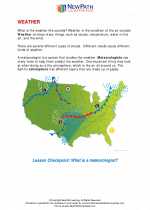 Weather
Weather  Worksheet/Answer key
Worksheet/Answer key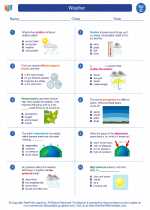 Weather
Weather  Worksheet/Answer key
Worksheet/Answer key Weather
Weather  Worksheet/Answer key
Worksheet/Answer key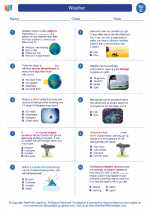 Weather
Weather  Vocabulary/Answer key
Vocabulary/Answer key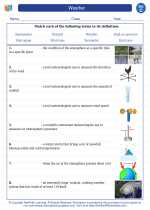 Weather
Weather  Vocabulary/Answer key
Vocabulary/Answer key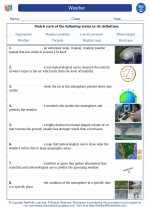 Weather
Weather 

 Worksheet/Answer key
Worksheet/Answer key
 Worksheet/Answer key
Worksheet/Answer key
 Worksheet/Answer key
Worksheet/Answer key
 Vocabulary/Answer key
Vocabulary/Answer key
 Vocabulary/Answer key
Vocabulary/Answer key

The resources above cover the following skills:
EARTH AND SPACE SCIENCE (NGSS)
Earth’s Systems
Students who demonstrate understanding can:
Represent data in tables and graphical displays to describe typical weather conditions expected during a particular season.